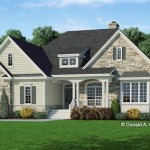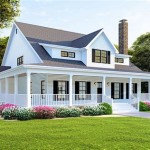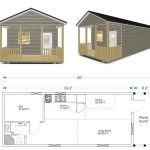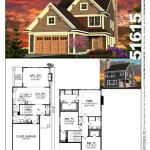Energy Efficient House Floor Plans
In today's eco-conscious world, building an energy-efficient home is more important than ever. By incorporating sustainable design principles into your house floor plan, you can significantly reduce your energy consumption, save money on utility bills, and create a healthier and more comfortable living environment.
Here are some key considerations when designing energy-efficient house floor plans:
Orientation and Site Planning
The orientation of your house on the lot plays a crucial role in energy efficiency. Position the home to maximize natural daylighting and minimize heat gain from the sun. In northern climates, orient the house with large windows facing south to capture solar heat. In southern climates, orient the house with windows facing north or east to avoid direct sunlight.
Building Envelope and Insulation
The building envelope, which includes the walls, roof, windows, and doors, is responsible for a significant portion of heat loss. Choose high-performance insulation materials with high R-values to minimize heat transfer. Air sealing is equally important, as even small air leaks can allow warm air to escape in winter or cool air to enter in summer.
Windows and Doors
Windows and doors are another major source of heat gain or loss. Opt for energy-efficient windows with double or triple glazing, low-emissivity coatings, and argon or krypton gas fill. Choose doors with insulated cores and weatherstripping to prevent air leakage.
Heating and Cooling Systems
Selecting an energy-efficient heating and cooling system is crucial for reducing energy consumption. Consider high-efficiency heat pumps, geothermal systems, or radiant floor heating. These systems provide comfortable heating and cooling while consuming less energy.
Passive Solar Design
Passive solar design utilizes natural sunlight to heat the home. Incorporate south-facing windows and a thermal mass, such as a concrete floor or masonry wall, to absorb heat during the day and release it at night. Overhangs or awnings can be used to block excess heat gain in summer.
Energy-Saving Appliances and Fixtures
Energy-saving appliances and fixtures, such as LED lighting, Energy Star appliances, and low-flow faucets, can further reduce your energy usage. Consider incorporating renewable energy sources, such as solar panels or a wind turbine, to generate your own electricity.
By following these principles, you can create an energy-efficient house floor plan that will provide you with a comfortable and sustainable living environment. Not only will you save money on utility bills, but you will also contribute to reducing your carbon footprint and protecting the planet.

Cool Energy Efficient Concrete House Plans Houseplans Blog Com

Floor Plan Friday An Energy Efficient Home House Plans L Shaped

Iris Home Design Energy Efficient House Plans Eco

Home Designs For Your Block S Orientation Geelong Homes

Dpe House Design Studio Energy Efficient S

4 Bedroom Archives Seco Homes Your Eco Friendly Energy Efficient Home Builder

How To Build An Energy Efficient Home

Energy Efficient House Plan 55060br Architectural Designs Plans

Cool Energy Efficient Concrete House Plans Houseplans Blog Com

Energy Efficient Home Things To Consider Perry Homes








